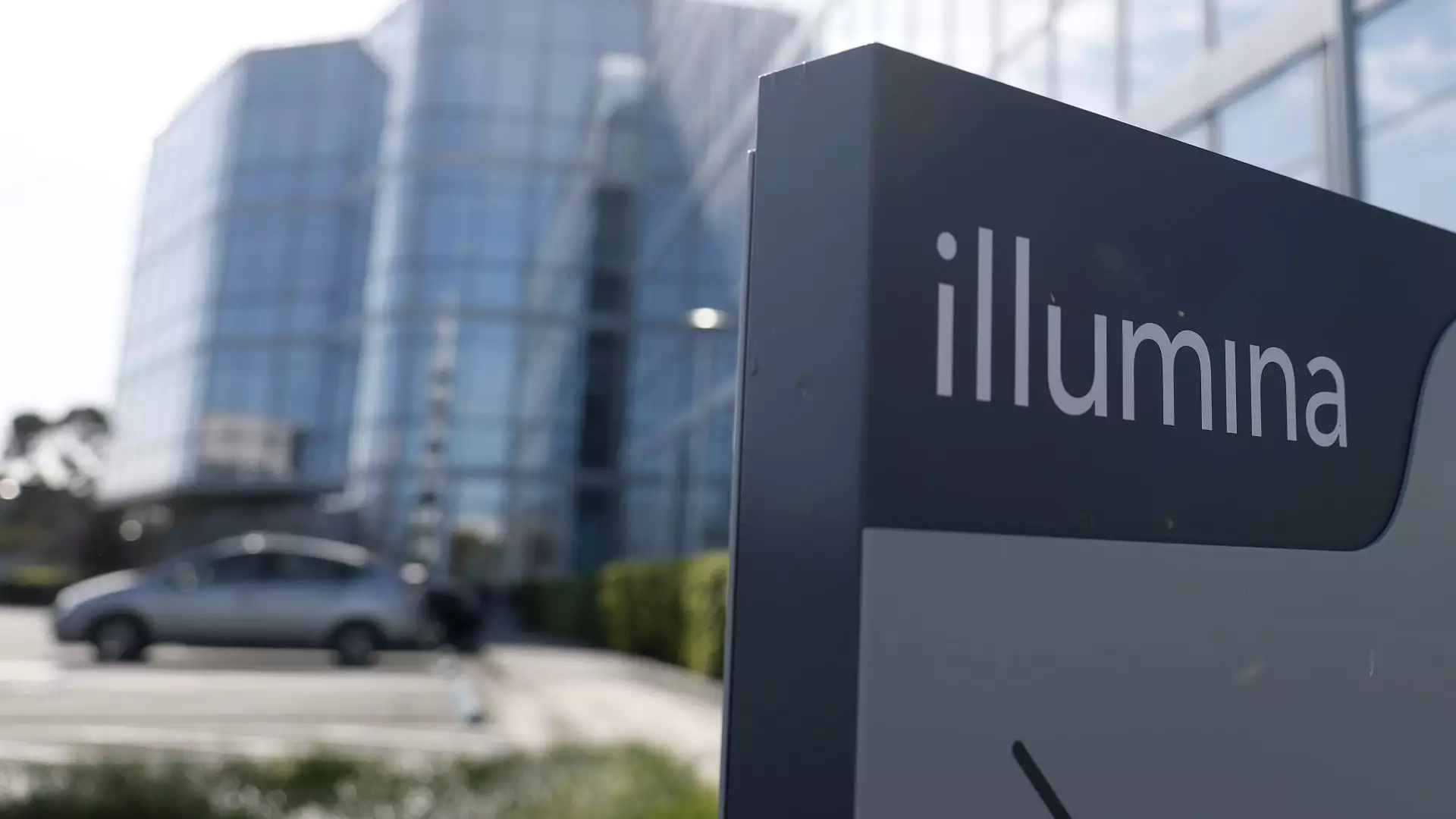Once flourishing at the peak of its industry, Illumina, a leader in genomic sequencing technology, has witnessed a catastrophic decline. With a staggering stock market value drop from a zenith of $70 billion to a mere $12.67 billion, it’s astonishing how swiftly fortunes can shift in the volatile world of biotechnology. This downturn is more than just a momentary setback; it epitomizes the perilous nature of innovation in an ever-complex regulatory and market atmosphere. What began as a promising trajectory has now become a cautionary tale replete with lessons in ambition, decision-making, and the stark realities of business leadership in a sector fraught with risks.
Innovations Gone Awry
Illumina’s technological advancements, including its revolutionary sequencing-by-synthesis chemistry and BeadArray technology, once placed the company in an enviable position. The surge in demand during the COVID-19 pandemic saw revenues skyrocketing by 40%, propelling the company into the limelight. However, the same technologies that positioned Illumina at the forefront of genomic science became a double-edged sword.
The re-acquisition of Grail, Illumina’s ambitious cancer detection venture, serves as a glaring example of this miscalculation. Originally spun out in 2016 with the intention of fostering innovation, the decision to pay $8 billion to reclaim it—amidst regulatory scrutiny—was misjudged at best, and reckless at worst. This costly venture not only alienated regulatory bodies like the Federal Trade Commission but also culminated in a significant fine from the European Commission, undermining Illumina’s credibility on the international stage.
Leadership Challenges and Missteps
Adding to Illumina’s woes is the ongoing turbulence in its leadership structure. The arrival of new executives, including a new CEO and CFO, could be interpreted either as a revitalization effort or a desperate scramble to stabilize a sinking ship. Appointing Keith Meister from Corvex Management to the board is emblematic of Illumina’s strategy to bring in seasoned investors who have navigated similar treacherous waters. Nevertheless, willitions posed by external factors—including geopolitical tensions impacting Illumina’s Russian and Chinese operations—must be considered in assessing the efficacy of this leadership shift.
One cannot ignore that Illumina operates under a razor-and-blade business model. While high margins from consumables have buoyed its revenue streams, the present moment calls for more than just maintaining operational efficiency—it demands visionary leadership poised to anticipate technological transitions and market shifts. The rollout of NovaSeq X, touted as the next generation of sequencing technology, must underscore not just future opportunities for innovation but also the immediate challenges that accompany such transitions.
A Market Leader’s Existential Crisis
Illumina’s struggle is deeply interwoven with the current climate of biotech funding uncertainty and the fluctuating support for institutions such as the National Institutes of Health. The ominous specter of a tightened financing landscape clouds potential growth avenues for the company. The once-unstoppable momentum in genomics has now slowed, leaving Illumina grappling with an uncertain future.
Moreover, the unforeseen impact of the pandemic’s aftermath has left the market questioning whether rapid growth can be sustained or if Illumina’s success was merely a blip in an otherwise cautious market. This existential quandary should compel corporate leaders to reevaluate their strategies. Are they merely reacting to present challenges or preemptively creating an ecosystem that fosters innovation and stability?
Illumina’s Path Forward: A Cautiously Optimistic Outlook
Despite the daunting challenges ahead, the silver lining may lie in Illumina’s ability to pivot and adapt. The recent appointment of experienced leadership can pave the way for strategic shifts that address the pressing concerns stemming from past misjudgments. The company’s dominance in the genome sequencing landscape—controlling over 80% of the global market—remains an undeniable advantage.
However, reliance on past glory won’t suffice. For Illumina to reestablish its relevance in the evolving genetic landscape, it must harness the combined strengths of innovative technologies, adept leadership, and keen market insights. The commitment to a streamlined and forward-thinking approach could transform the company’s fortunes yet again, turning past disasters into lessons for a brighter future.
As we observe Illumina’s attempts to navigate its way through the storm, awareness of industry dynamics, regulatory environments, and consumer demands will be key determinants of success. Will Illumina emerge from these tumultuous times with renewed vigor, or will this be a long, drawn-out struggle toward relevance? The answer lies in the proverbial crystal ball that is the biotechnology sector—fraught with uncertainties but teeming with possibilities.

